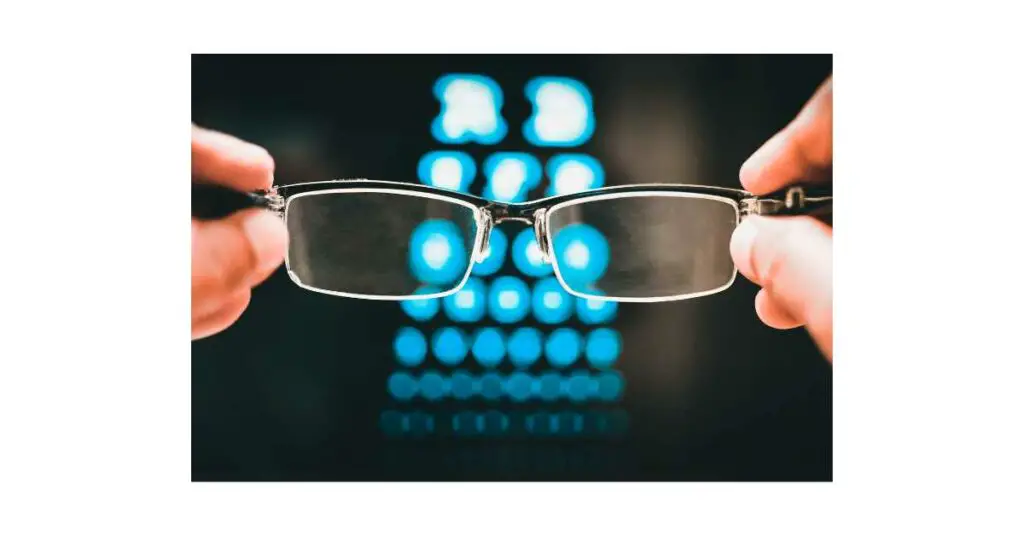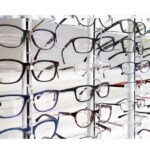People often wonder if reading glasses and prescription glasses are the same. In reality, there are some key differences between the two. This article will explore those differences and help you decide which type of glasses is right for you.
No, Reading glasses and prescription glasses are different. Prescription glasses are designed to correct vision, while reading glasses are for people who don’t need vision correction but who want to improve their eyesight when reading or doing other close-up tasks.

Features of reading glasses and prescription glasses
The better way to understand the difference between reading and prescription glasses is to find their features. So, let’s have a closer look at both types.
Reading glasses
Reading glasses are a great way to improve your vision without the need of getting complicated surgery. They work by bending light rays to help focus images more clearly on the retina, and come in many different shapes and sizes for different needs. A key attribute of reading glasses is that the lenses are usually thicker than those we use for distance vision due to the extra power necessary to help us see up close. Most optometrists recommend wearing reading glasses after age 40 when people start having difficulty focusing on items that are held at arm’s length. Reading glasses can help restore comfortable, clear vision so you don’t have try hard just to focus on texts or other small objects.
Prescription glasses
Prescription glasses are an important tool used to corrent refractive errors such as nearsightedness and farsightedness. They work by altering the way light travels through our eyes so that we can see clearly, in focus. Different types of lenses exist, depending on the degree and severity of the refractive error. For instance, if someone is nearsighted, they would benefit from concave lenses, while those with farsightedness would require convex lenses. The type and level of curvature required is determined by an optometrist. Additionally, prescription glasses can come in a variety of tints and coatings based on individual prescription needs. UVA/UVB protection is one such example, as well as anti-glare or blue-light filters for computer use or nighttime driving. Overall, prescription glasses are an invaluable service that helps correct vision problems and preserve our long term eye health; thus, it is important to consult an optometrist if you’re having any vision issues and discuss whether wearing prescription glasses should play a role in your treatment plan.
What are the benefits of reading glasses and prescription glasses?
What are the similar benefits of each type of glasses
Wearing reading and prescription glasses offers many of the same benefits.
- Reading glasses help you read in situations with low light, while prescription glasses offer the same assistance during everyday activities, like walking or driving.
- People who wear reading or prescription glasses benefit from improved eyesight and can see details that others may miss.
- Both types of glasses improve depth perception, enabling you to participate in activities with better performance and safety than if you had impaired vision.
- Strong corrective lenses can protect your eyes from ultraviolet radiation, which is known to have many long-term effects on vision if left unprotected.
As such, whether for reading or prescriptions, there are countless advantages to be had from wearing corrective eyewear to keep your eyes sharp and safe over time.
What are the benefits of wearing reading glasses over prescription glasses?
- Reading glasses provide an economical and convenient way of improving vision when reading or looking at small objects from a close distance. They are usually much more affordable than prescription glasses and only need to be replaced if something happens to them, like scratching the lenses.
- Wearing reading glasses is typically far less intrusive than prescription eyewear; they require no maintenance like inserts or contact lens solutions and don’t need to be adjusted as often as regular eyeglasses.
- Specialized magnifying reading glasses can present a wide range of options when it comes to stronger prescription lenses since they are intended for near vision tasks such as reading fine print or detailed crafting projects.
With so many advantages over prescription eyewear, it’s easy to see why reading glasses have become so popular with people who want improved vision without the hassle of traditional glasses.
What are the benefits of wearing prescription glasses over reading glasses?
Wearing prescription glasses rather than reading glasses offers a higher level of convenience and flexibility when it comes to vision correction.
- With prescription glasses, you can see clearly at distance, intermediate, and near distances without having to constantly switch between several pairs of glasses. This allows a person to pursue activities that may require many focal points with the same eyewear.
- Prescription glasses are customized according to an individual’s unique optical needs, while readers come in pre-configured powers.
- Prescription lenses often come with coatings that help improve visibility in certain conditions as well as reduce glare from digital screens; two benefits that readers don’t provide.
Overall, prescription eyewear provides a wide range of advantages over traditional reading glasses.
How do I decide what to wear: reading glasses or prescription glasses?
Making the decision between reading glasses and prescription glasses can be a difficult one; however, knowing your individual needs can help make this decision much easier. If you are having trouble seeing close up, but your vision is still good from a normal distance away, then the choice should be easy – opt for reading glasses. On the other hand, if you need help seeing far away, or both near and far away, then you will require a strong prescription. It’s important to not forget about bi-focus, which are specifically made to assist with both near and far sightedness issues. In general, it’s best to visit an eye doctor in order to accurately assess your vision and determine which type of glasses would be most suitable. With the right knowledge and information, it won’t take long until you find the perfect pair of glasses that fit your needs!
What consequences arise from the wrong selection between prescription and reading glasses?
When deciding between prescription and reading glasses, consequences can be serious if the wrong element is chosen. If you opt for prescription glasses when you should choose reading glasses, your distance vision may be impaired because of the magnification needed for near items. On the other hand, if you mistakenly choose reading glasses when prescription lenses are desired, it can lead to blurry near vision. Both options result in frustration as everyday tasks become more difficult. Taking additional time to research and understand the need before making a selection is beneficial and can prevent these problems from arising in the future.
A comparison between the cost of reading and prescription glasses
Many people need eyeglasses to see clearly, but they may not realize how the cost of those glasses can vary drastically. Reading glasses are typically very affordable, costing only a few dollars in many cases. On the other hand, prescription glasses can be quite expensive and require specialized prescriptions from an eye care doctor. This means that if you need more than just basic reading glasses, you will have to pay more for the additional features like bifocals or trifocals – this cost can range anywhere from a few hundred dollars to several thousand depending on your provider and lens type. All in all, if you are looking for basic vision correction, reading glasses are definitely the most cost effective solution compared to prescription ones.
Are there any other types of glasses that people might need
Other than reading and prescription glasses, eyeglasses can be used to protect eyes from the sun’s harsh rays. Sunglasses come in a variety of stylish designs and can even be custom-made with prescription lenses. Additionally, safety glasses are a must for anyone who does activities that could cause injury or particles to enter the eye. Finally, computer glasses help people who work on computers for long hours reduce the stress put on their eyes by helping reduce glare from screens and also focus on near objects more efficiently. Whether you are out enjoying the summer sun or typing away on your computer, having the correct type of glasses can make all the difference in maintaining healthy eyesight!
Conclusion
Though both types of eyewear can provide improved vision, it’s important to remember that reading glasses aren’t a substitute for prescription glasses. If you need vision correction beyond what reading glasses can offer, you should visit your optometrist for an eye exam and get a prescription.
By understanding the similarities and differences between reading glasses and prescription glasses, you can ensure that your eyesight is safe and up to date. With the right eyewear, you can see clearly—whether it’s near or far!










